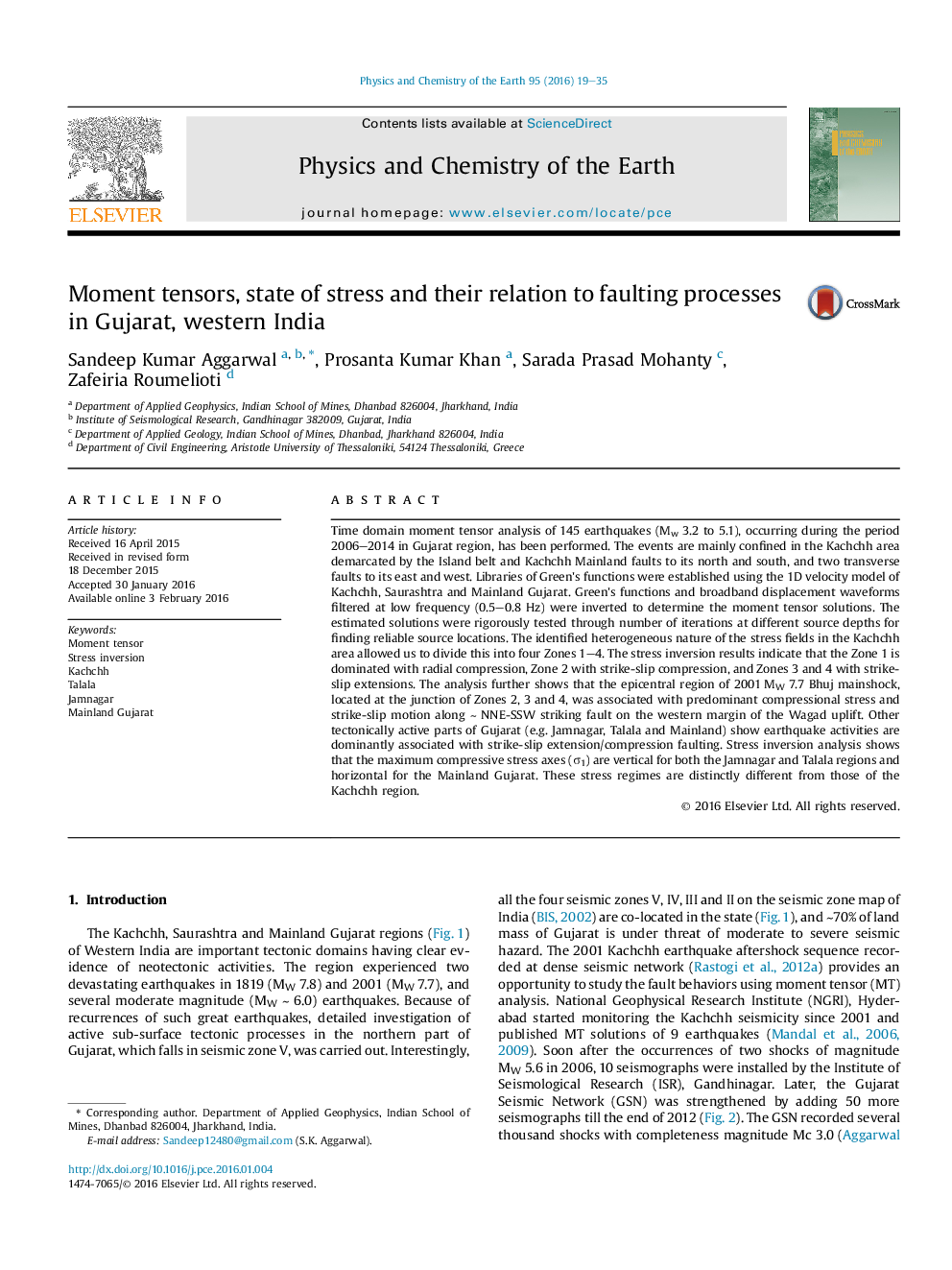| کد مقاله | کد نشریه | سال انتشار | مقاله انگلیسی | نسخه تمام متن |
|---|---|---|---|---|
| 4720786 | 1639343 | 2016 | 17 صفحه PDF | دانلود رایگان |
• Time domain moment tensor (TDMT) inversion of 145 earthquakes (Mw 3.2 to 5.1).
• Iterative stress inversion of focal mechanism parameters.
• Operative stress fields over entire Gujarat.
Time domain moment tensor analysis of 145 earthquakes (Mw 3.2 to 5.1), occurring during the period 2006–2014 in Gujarat region, has been performed. The events are mainly confined in the Kachchh area demarcated by the Island belt and Kachchh Mainland faults to its north and south, and two transverse faults to its east and west. Libraries of Green's functions were established using the 1D velocity model of Kachchh, Saurashtra and Mainland Gujarat. Green's functions and broadband displacement waveforms filtered at low frequency (0.5–0.8 Hz) were inverted to determine the moment tensor solutions. The estimated solutions were rigorously tested through number of iterations at different source depths for finding reliable source locations. The identified heterogeneous nature of the stress fields in the Kachchh area allowed us to divide this into four Zones 1–4. The stress inversion results indicate that the Zone 1 is dominated with radial compression, Zone 2 with strike-slip compression, and Zones 3 and 4 with strike-slip extensions. The analysis further shows that the epicentral region of 2001 MW 7.7 Bhuj mainshock, located at the junction of Zones 2, 3 and 4, was associated with predominant compressional stress and strike-slip motion along ∼ NNE-SSW striking fault on the western margin of the Wagad uplift. Other tectonically active parts of Gujarat (e.g. Jamnagar, Talala and Mainland) show earthquake activities are dominantly associated with strike-slip extension/compression faulting. Stress inversion analysis shows that the maximum compressive stress axes (σ1) are vertical for both the Jamnagar and Talala regions and horizontal for the Mainland Gujarat. These stress regimes are distinctly different from those of the Kachchh region.
Journal: Physics and Chemistry of the Earth, Parts A/B/C - Volume 95, October 2016, Pages 19–35
